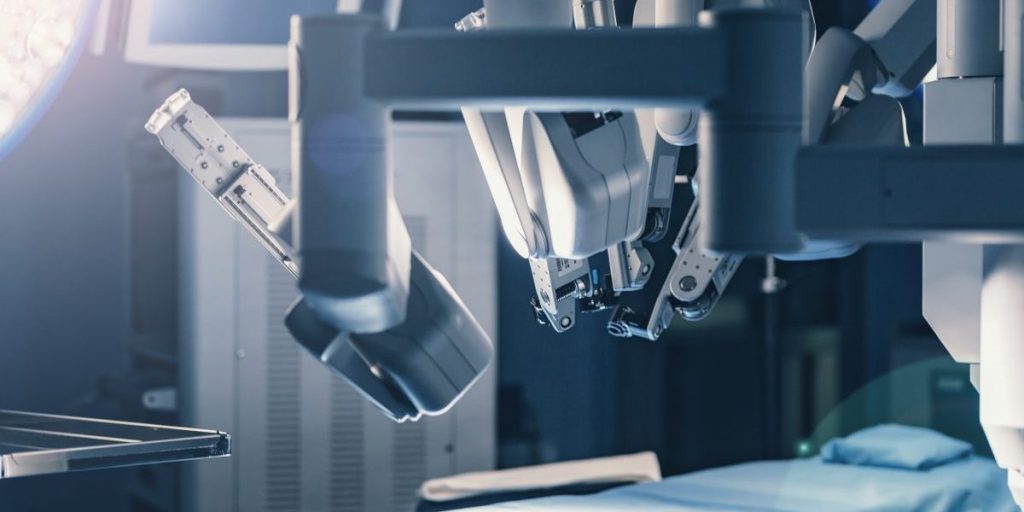Caresyntax has raised $180 million in a Series C extension and debt financing round, the company announced today, further fueling the development and marketing of its “surgical intelligence platform,” a software-as-a-service (Saas) offering that seeks to improve surgery outcomes for patients by connecting the entire surgery process through tech — from booking staff to monitoring the surgery with close-up video to providing analytics about surgery outcomes and costs.
The platform can even connect to other existing robotic surgery tools and equipment found in operating rooms around the world.
Now, the new funding funding builds on Caresyntax’s previous $130 million Series C from 2021 and other sources, bringing its total funding to around $400 million since its founding in 2013.
VentureBeat spoke with co-founder Bjoern von Siemens to unpack how Caresyntax plans to deploy generative AI and machine learning in hospital and healthcare operating rooms.
The conversation revealed both promising advancements and lingering challenges in the quest to make surgery smarter and safer.
Breaking down the funding
The $180 million raise consists of $80 million in equity and $100 million in growth debt. Investors include Symbiotic Capital, BlackRock Innovation Capital and Optum Ventures.
Von Siemens stated the funding will drive customer adoption in the U.S. and EMEA regions, accelerate AI development,and support further acquisitions.
Caresyntax claims a 75% revenue increase in the first half of 2024, though specific figures weren’t disclosed.
Data acquisition: The foundation of accurate AI
Central to Caresyntax’s approach is its comprehensive data acquisition strategy. “At the foundational layer, we are acquiring structured and unstructured data during the care pathway,” von Siemens explained.
This includes patient information, contextual data about the care site and details on devices and robotic systems used.
In the operating room, Caresyntax deploys IoT and edge computing solutions to create a unified data stream. This approach enables real-time analysis and post-surgery insights. The company’s solutions are present in over 7,000 operating rooms and are used by more than 40,000 surgical teams globally.
Interestingly, Caresyntax also leverages perhaps unconventional data sources. Von Siemens noted the utility of YouTube for training data. “If you look for surgical videos, something to shock yourself with over a coffee, you can see everything, almost.”
The company collaborates with Google and YouTube to tap into this vast repository of surgical videos, which many surgeons use for education and preparation.
Vendor partnerships and open ecosystem
Caresyntax is taking an open, vendor-neutral approach, positioning itself as the “Android for robotic surgery.” This strategy contrasts with the closed ecosystems of incumbent surgical robotics companies.
“We are as open as we possibly can be. But of course, lives are at stake and so you have to build a medical class certified software system for the intraoperative part,” von Siemens explained. This balanced approach allows Caresyntax to maintain necessary medical-grade certifications while fostering innovation.
The company has established partnerships with several robotic surgery providers, including Medtronic, B. Braun and Cambridge Medical Robotics. Additionally, Caresyntax collaborates with insurers like Relyens and ProAssurance, as reported in a press release, to enhance risk management and cost-efficiency in surgical procedures.
Navigating regulatory challenges
Caresyntax’s open ecosystem approach faces significant regulatory hurdles. The company navigates this landscape by employing a hybrid data storage model.
“We have an edge to cloud system. And the edge is the medical grade, so that is closed off… otherwise you cannot deploy it,” von Siemens said.
To facilitate data sharing while maintaining patient privacy, Caresyntax has established a patient safety organization for surgery. This allows clients to opt into sharing anonymized data for research purposes, potentially accelerating innovation in the field.
Measurable impact and future vision
According to Medical Device Network, hospitals using the Caresyntax platform have seen a 39% increase in block utilization and a 25% increase in billable minutes.
The platform can potentially save hospitals more than $500 per case through efficiency improvements and reduced complication risks.
While currently focused on AI assistance, von Siemens envisions a future with more autonomous AI in surgery. “The next step would be to connect those simulations into the actuation so to actually have fully autonomous robotic systems doing the surgery,” although deployment remains far away, he stated.
Source link

